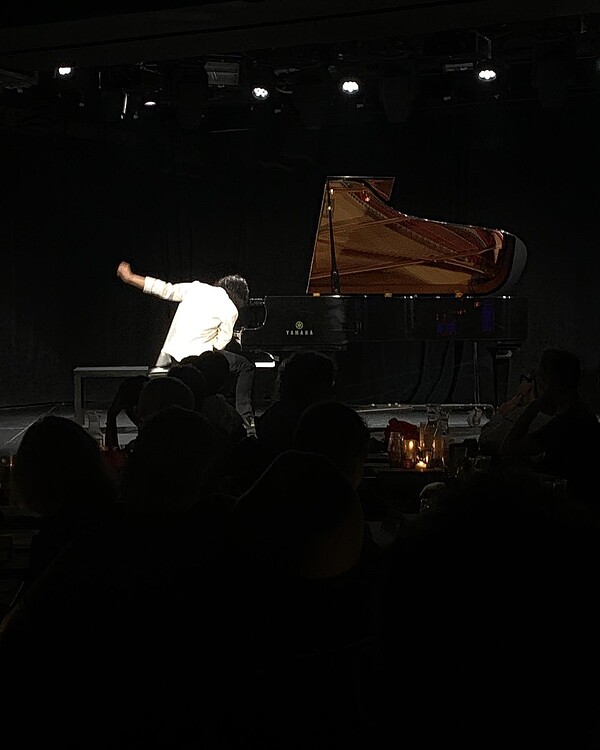Acclaim
Review
Above And Beyond The Big Bang

”How to interpret eight fortes (from ‘Automne a Varsovie’)? I think maybe I should hurl my whole body at the piano as violently as possible and hope for the best. They would find my bloody corpse weeks later amid the moldy coffee cups, odiferous testament to my devotion to the composer's intent.” - Jeremy Denk
”I was fifteen years old, and I hardly knew how to play a simple Bach prelude on the piano when I began to compose music, and at the most advanced level. I never studied such things as harmony. But I always listened to music. I like music.” - György Ligeti
Like tourists anxious to see Mona Lisa in the Louvre, those who like György Ligeti can’t wait until the pianist attempts to play that aural Everest, the fffffff (or maybe ffffffff? Who’s counting?) from the Automne a Varsovie.
And that is hardly fair. Yes, Taka Kigawa tackled Ligeti’s Big Bang with suitable cries and whispers. But listening him play the complete three books of études at Poison Rouge last night, one quickly dismissed his digital genius for the chance to hear Ligeti’s equivalent of merging both Testaments, the Koran, Talmud, Vedas and Finnegans Wake into a one-hour salmagundi.
Hearing the individual études, one marvels at Ligeti’s pure creation (more on that later). Hearing them together, one is astonished at the moods, the tricks, the jokes, the towering infernos, the transmutation from Debussy, Chopin and Balinese gamelan into a Ligeti Rumanian/Jewish/Magyar/European goulash, piled with raw fiery paprika.
And what of Ligeti’s “pure” creation? His only spiritual forebear was Mozart, from whom music transcended mere a “Classical” period, springing like Venus from the sea. Ligeti knew every composer of the 20th Century, but his music paid homage only to the future. No dodecaphonist, no neo-Classicist, no folkish American, no Cage Absurdisist, György Ligeti went down his own multifarious paths.
They included his own interests in fractals, chaos theory, Renaissance polyphony and colors unseen by mere eyes. Using black and white keys as an aural chiaroscuro. Taking the piano into impenetrable jungles, where only the most audacious would go.
And so onto Taka Kigawa and the Yamaha piano of Poisson Rouge. Playing the 18 études, mostly by memory. But each with its own personality. Not, however, obeying Ligeti’s dictum to play each to the extremist extreme. Instead, each etude both complemented and contrasted the preceding and proceeding one,
In fact, the (justly named) Désordre was almost hidden by Mr. Kigawa’s jazzy tempo–-though the disordered feeling came wit h the pianist playing white notes on the right hand, black on the left. And how did he follow? With memories of things past. One etude like Debussy on crack, and a third where Mr. Kigawa played the keys like a pair of burlesque comics giving ripostes to each other. And following that, Fanfares. I had heard it before, but Mr. Kigawa gave it the clarity to show that the work had a scale repetition which was repeated over and over and over again. All hidden by massive chords, but peeping out like a gnomic specter under Mr. Kigawa’s deft fingering.
The rest of the evening produced digital miracle on miracle. The “big bang” etude preceded by a lulling rainbow of notes. A gamelan style opening Book 2, and an astounding Devil’s Staircase and equally enthralling Infinite Column.
Mr. Kigawa took a break before Book 3, equally complex but somehow calming. The ending measures are my imagination. Ligeti had proposed six or seven more études, but illness precluded this. Still, the final measures of Canon were like those of Beethoven’s final bagatelle or “the poet speaks”, ending Schumann’s Kinderszenen. Ligeti’s final calming measures were like a benediction, an orison, an Olympian amen both for his creation, and Taka Kigawa’s magnificent re-creations.